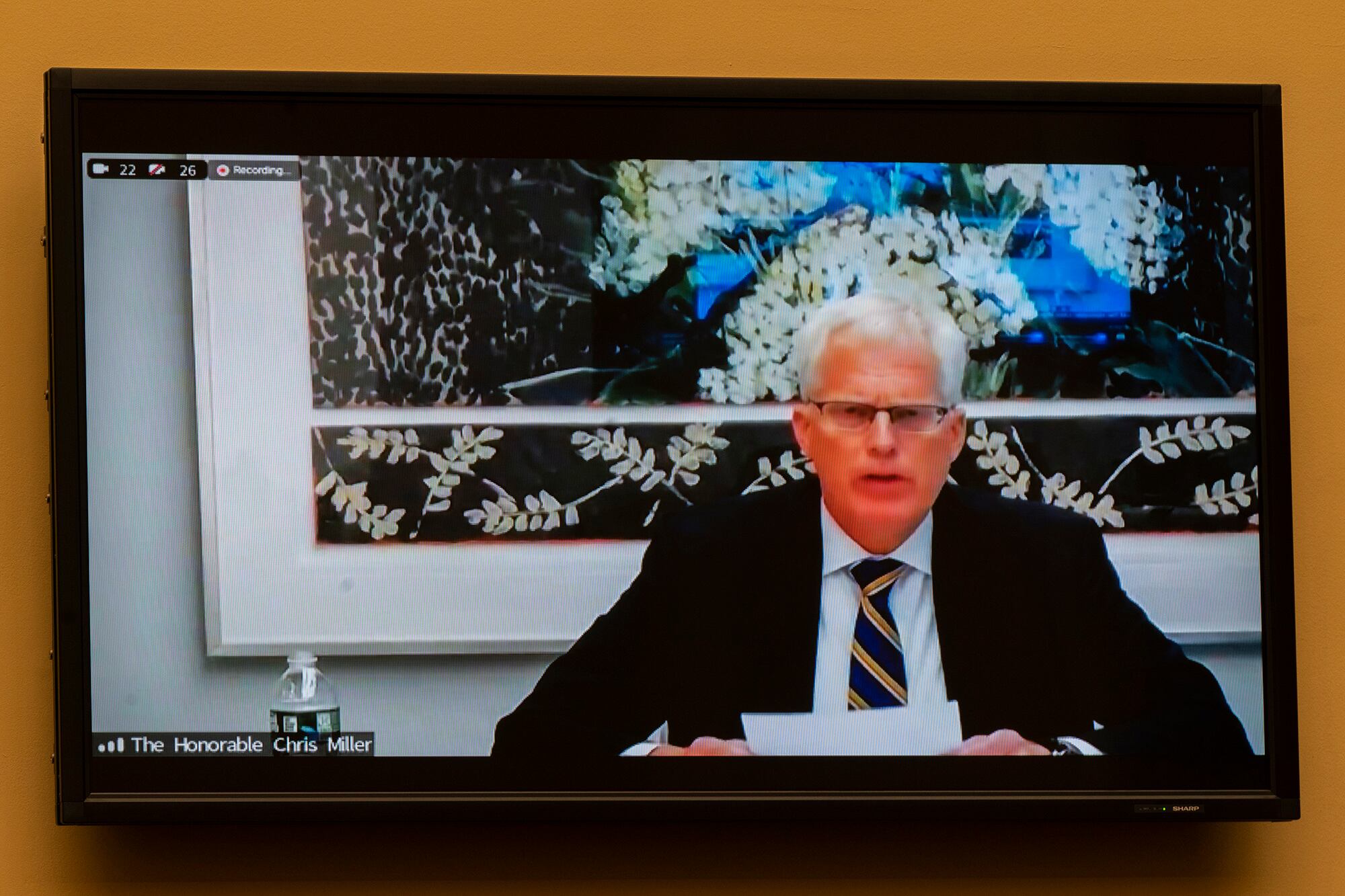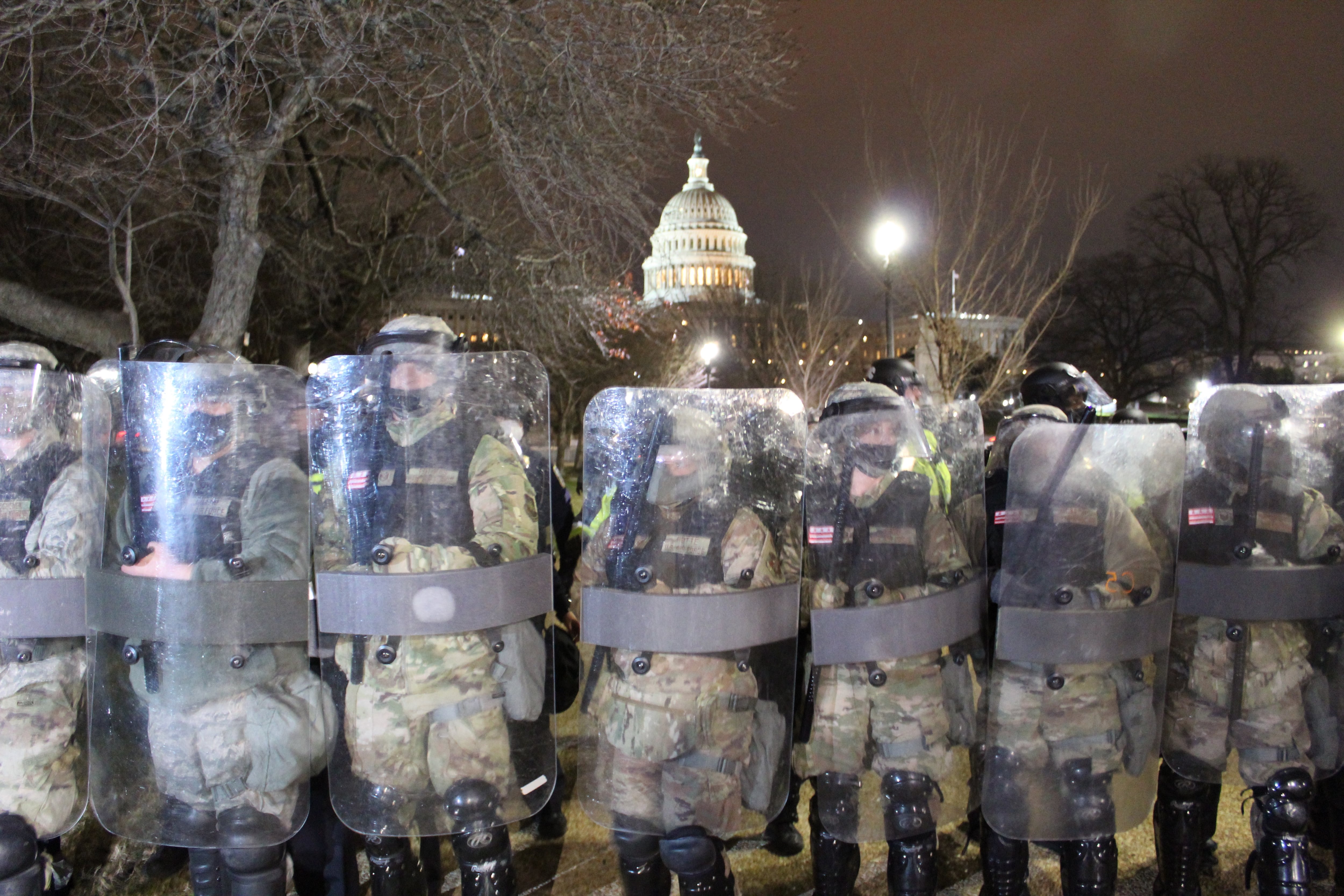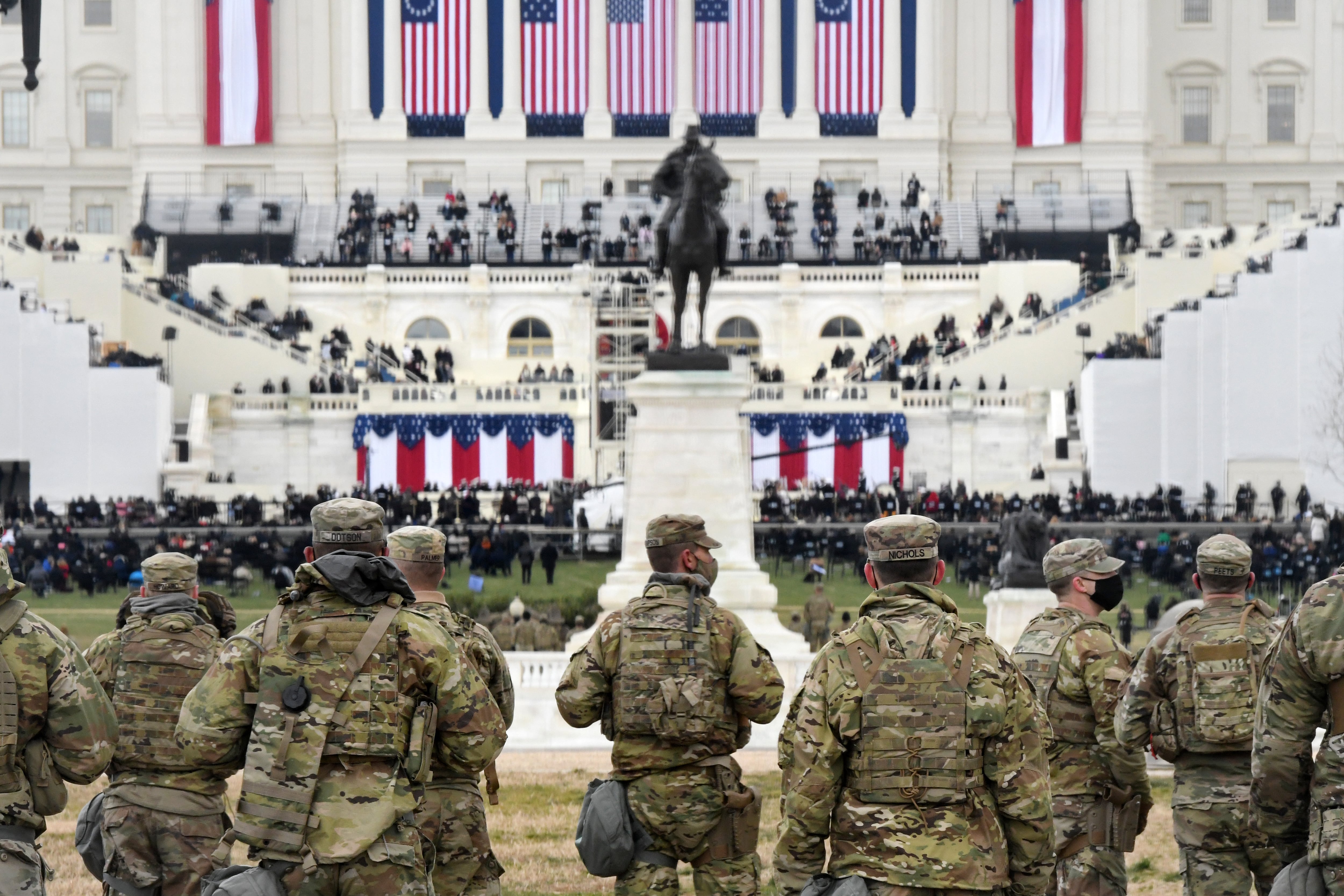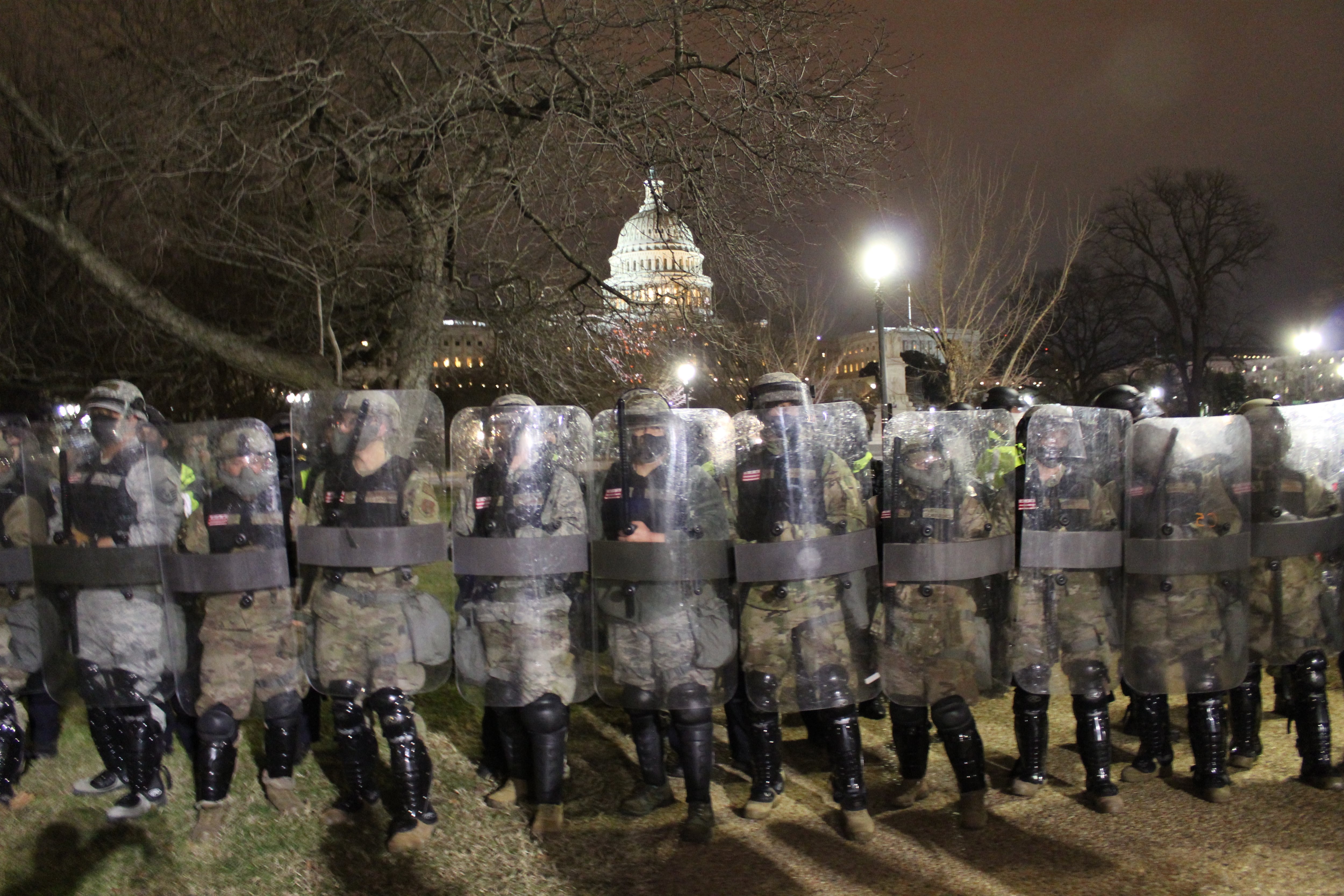Four months after thousands of protesters marched on the Capitol, hundreds of them smashing windows and prying open doors to breach it, a former defense official at the center of the federal government’s response appeared before Congress to tell his version of events.
Former Acting Defense Secretary Christopher Miller told lawmakers that he did not waffle on whether to send in District of Columbia National Guard troops to help civilian law enforcement clear the Capitol, but he did offer some insight as to his frame of mind that day.
“My concerns regarding the appropriate and limited use of the military in domestic matters were heightened by commentary in the media about the possibility of a military coup, or that advisers to the president were advocating the declaration of martial law,“ he said in his opening statement to the House Oversight Committee.
Jan. 6 arrived in the wake of national protests over the summer, which came to such a fever pitch that after rioting across the street from the White House in late May, then-President Donald Trump requested thousands of guardsmen from around the country to secure federal offices and monuments in downtown D.C.
He also took to Twitter to threaten invoking the Insurrection Act, which would allow active-duty service members to act as law enforcement, as soldiers from Fort Bragg, North Carolina, and Fort Drum, New York, made their way to Maryland and Virginia, in preparation for possible martial law.
With all of that in mind, Miller and then-Army Secretary Ryan McCarthy were careful to give authorities in D.C. only what they asked for, keeping in mind how political it would look if the National Guard swarmed the District on the day Congress was to certify a contested election.
“No such thing was going to occur on my watch, but these concerns — and hysteria about them — nonetheless factored into my decisions regarding the appropriate and limited use of our armed forces to support civilian law enforcement during the Electoral College certification,” he said.

Miller reiterated that D.C. Mayor Muriel Bowser requested on Dec. 31 that several hundred unarmed National Guardsmen assist the Metropolitan Police Department with traffic control.
The Capitol Police, a different jurisdiction, did not request assistance, and Miller testified, he was assured that the many law enforcement agencies operating in D.C. had appropriate personnel to deal with what they thought was going to resemble the Black Lives Matter protests of the previous summer.
Committee Chairwoman Rep. Carolyn Maloney, D-N.Y., appeared confused about the official timeline provided by DoD, which shows that Miller authorized the full mobilization of the D.C. Guard at 3 p.m. An hour later, the Associated Press reported, then-Vice President Mike Pence called Miller and the two talked about the situation on the ground.
RELATED

At 5:40, after notifying thousands of troops, meeting up at the armory and donning riot gear, the Guard arrived at the Capitol Complex.
Maloney, in her questioning, insinuated that Pence’s call motivated Miller to mobilize the Guard ― despite the fact that Miler had already given that order at the time of the call, and as the vice president is not in the chain of command, it wouldn’t have been up to Pence to compel Miller to do anything.
Officials have said publicly since Jan. 6 that then-President Donald Trump had given Miller full authority to activate the Guard ahead of the planned “Stop the Steal” rally, removing the need for him to consult the president on the day.
Under further questioning, from Rep. Stephen Lynch, D-Mass., Miller offered that while he did believed that Trump’s rallying cry to march on the Capitol did contribute to the riot, it was clear that there was planned coordination when it came to infiltrating the complex, based on some of the gear carried by the rioters.
Still, he emphasized, the Guard arrived as quickly as is possible during such a large-scale mobilization, and only when it became clear that there were not enough civilian law enforcement to push back, after rioters began ransacking Capitol offices.
“I fervently believe the military should not be utilized in such scenarios other than as a last resort and only when all other assets have been expended,” he sad. “I am a student of history and the Department of Defense has an extremely poor record in supporting domestic law enforcement,” including the 1970 massacre by National Guardsmen of four students at Kent State University.
RELATED

Lawmakers did not question Miller about the D.C. quick response force that was on call Jan. 6, which Maj. Gen. William Walker, the D.C. Guard adjutant general at the time, testified in March that he had not been allowed to deploy.
In the wake of Jan. 6, lawmakers and other officials have questioned whether Miller, a Trump appointee slow-rolled his response because of his boss.
Others have questioned why the military has vast resources for operations around the world, but it could not quickly respond to an attack at home.
Miller was steadfast in his response.
“I believe that this criticism is unfounded and reflects inexperience with, or a lack of understanding of, the nature of military operations or, worse, that it is simply the result of politics. I suspect that much of it is a combination of these factors,” he said. “I do not believe these critics understand the complexities involved in redeploying forces in an urban environment and, again, the subordinate role the military must play in the rare instances it is necessary to use such forces to support domestic law enforcement agencies. This isn’t a video game where you can move forces with a flick of the thumb, or a movie that glosses over the logistical challenges and the time required to coordinate and synchronize with the multitude of other entities involved, or with complying with the important legal requirements involved in the use of such forces.”
Meghann Myers is the Pentagon bureau chief at Military Times. She covers operations, policy, personnel, leadership and other issues affecting service members.





